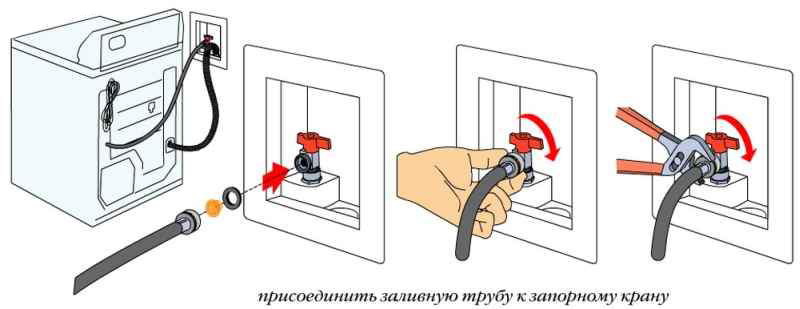Content
- The advantages of PVC pipes
- Different ways to connect PVC pipes
- Types of adhesive fittings
- Cold welding
PVC pipes are plastic products with the unpronounceable name polyvinyl chloride. This material finds its application in many areas of modern life, including the creation of pipelines for various purposes. Pipes made from polyvinyl chloride have many significant advantages and some disadvantages.

The advantages of PVC pipes
- outstanding ring stiffness, providing resistance to high pressure;
- fire resistance;
- resistance to thermal deformation within the permissible temperature values;
- smooth surface preventing clogging;
- resistance to UV radiation;
- no impact on the properties of the transported fluid;
- light weight;
- ease of installation;
- low cost.

Disadvantages:
- low frost resistance;

- poor heat resistance and low melting point - at a temperature of 78 degrees the product already loses its rigidity.

The combination of these characteristics defines the scope of PVC pipes. They participate in cold water supply and sewage systems, and can be used to supply drinking water. However, for hot water supply, PVC pipes can not be used.
Different ways to connect PVC pipes
PVC pipes can be connected in different ways: glue, flanged, bell-shaped. Adhesive bonding is considered the most durable and at the same time very simple. It must be borne in mind that different connection methods are suitable for different types of PVC pipes. This means that if you are planning mount water supplyusing glue or the so-called "cold welding", you need to buy the appropriate pipes and fitting to them. They will be called in the store: “PVC glue pipes”, “fittings and pipes for glue”.
USEFUL INFORMATION:How to choose hot and cold water meters?

Types of adhesive fittings
In the adhesive connection of pipelines from PVC pipes, an important role is played by fittings - parts intended for connecting pipes. With their help, you can assemble designs of any configuration. Fittings come in several forms.

- Nipple - adapter designed to connect two pipes of different diameters. In addition, it serves as a sealant and a barrier that protects the joint from external influences. Often used in water supply, for connecting oil pipelines and gas pipelines.
- Coupling - a fitting involved in connecting parts of a pipeline with the same diameter. It strengthens the section of the system and ensures tightness and strength of the connection.

- Angle - a pipe element that is installed in places of bending. Its distinctive feature is its special strength. Its wall is thicker than other types of fittings, which allows you to strengthen the strength of both the corner itself and the entire system. The angle can be bent at 45 and 90 degrees. It is applied on all types of pipelines.

- Branch - a fitting having a branched structure, different angles of inclination and connecting a different number of pipes. Typically, the tap is involved in the docking of internal and external sewers. Pipes coming from various plumbing elements and household appliances (toilets, sinks, washing and dishwashers), adjacent to larger sections of the system, which goes into general sewer.

Cold welding
Installation of piping using glue is called cold or chemical welding, due to the strength and integrity of the resulting compound. Glue for PVC has a common basis with the material from which PVC pipes are made. It acts on the top layer of the parts to be joined, softening it. After the glue hardens, a solid monolithic structure is obtained.
USEFUL INFORMATION:How to assemble a siphon for a kitchen sink: proper installation of the product

Installation of PVC pipes and fittings for adhesive is as follows.
- With the help of a pipe cutter or a hacksaw, a piece of pipe of the desired length is cut off. The chamfer is removed from the end. The edge of the product is treated with sandpaper for better grip.

- The pipe is wiped with a cloth with a product specially designed for these purposes, grease, dust and any other contaminants are removed.
- A small amount of glue is evenly distributed along the edge of the PVC pipe and the inside of the fitting.


- Both parts are combined, one of the elements is rotated to create a more uniform adhesive layer.

- Excess glue is wiped off with a cloth.
- The complete immobility of the resulting structure must be ensured. Even one awkward movement can disrupt the connection, and it will leak.
Attention! Work should be carried out in a ventilated area - harmful volatile substances are released during bonding.

EXPERT SITE
Tsugunov Anton Valerevich
Master Station Wagon
- Since 2003, I have been engaged in the repair and decoration of premises.
- Over 100 completed objects.
- I appreciate the quality, more than the quantity!
Personal page >>>
Friends!
I offer you the service "Friend Builder"
As this site develops, subscribers and visitors are turning to me more and more often asking for help with advice on various issues of repair and decoration.
Questions are sometimes asked very complex and interesting. You can’t write an article for each situation, so I decided to advise you individually.
Thanks to you, friends, a new direction of my favorite work has been born - share your experience and benefit everyone who is undergoing repairs!
Get a one-time consultation from me >>>
Order full apartment repair support >>>


